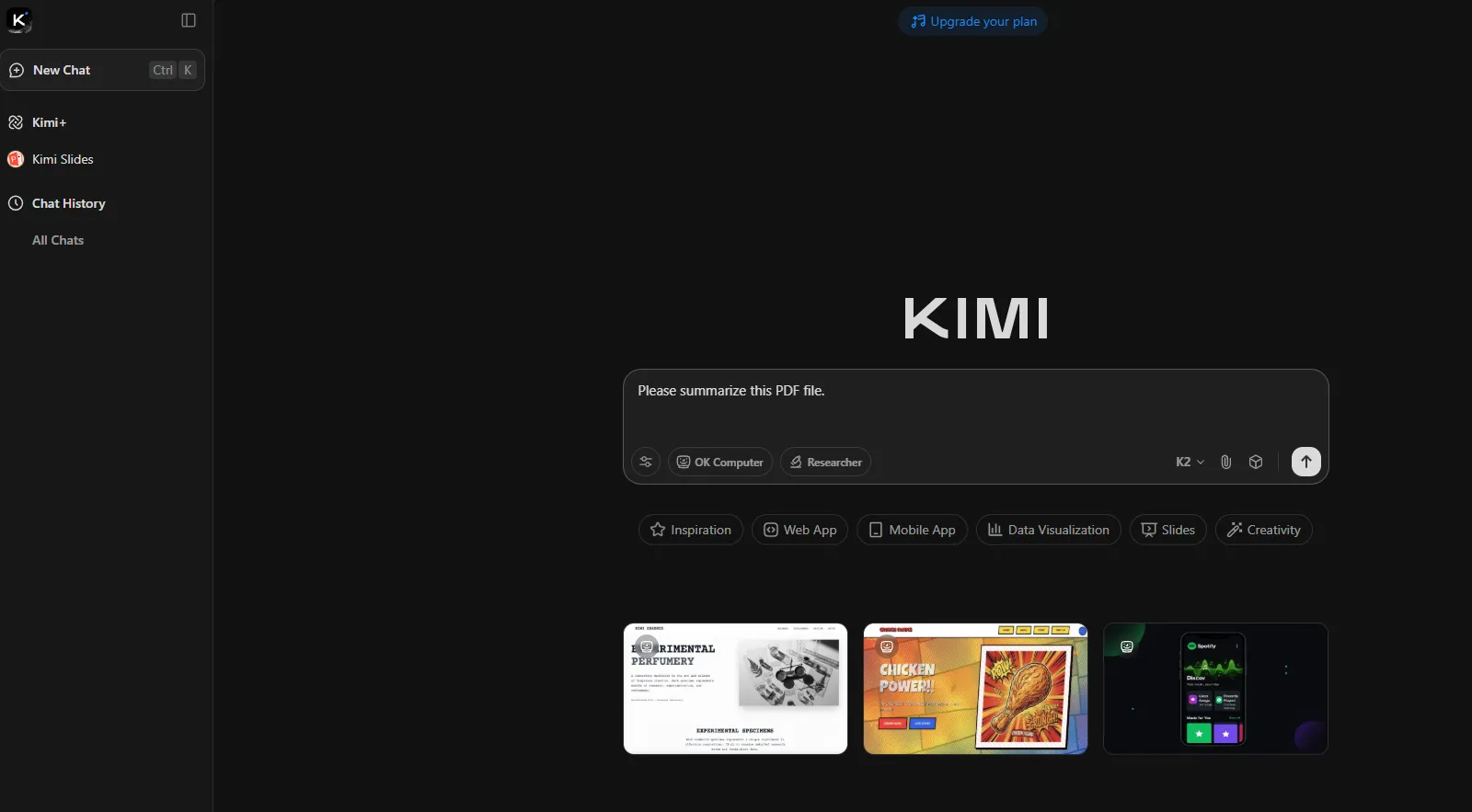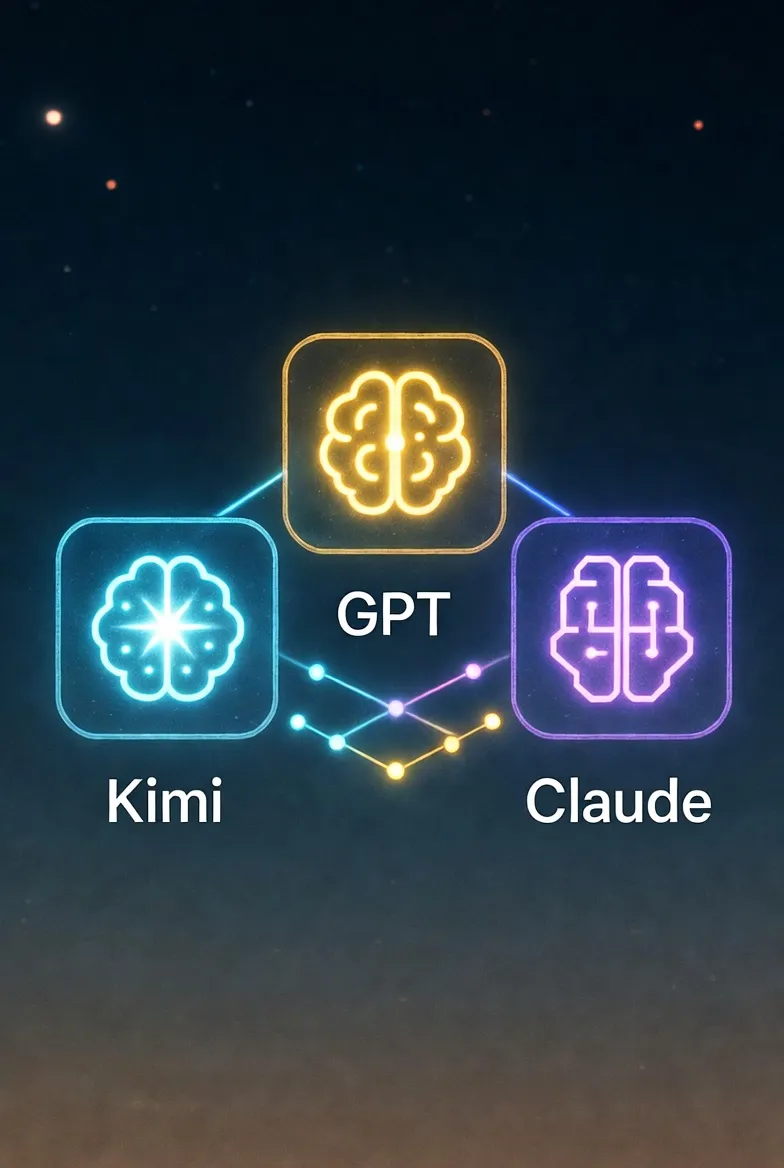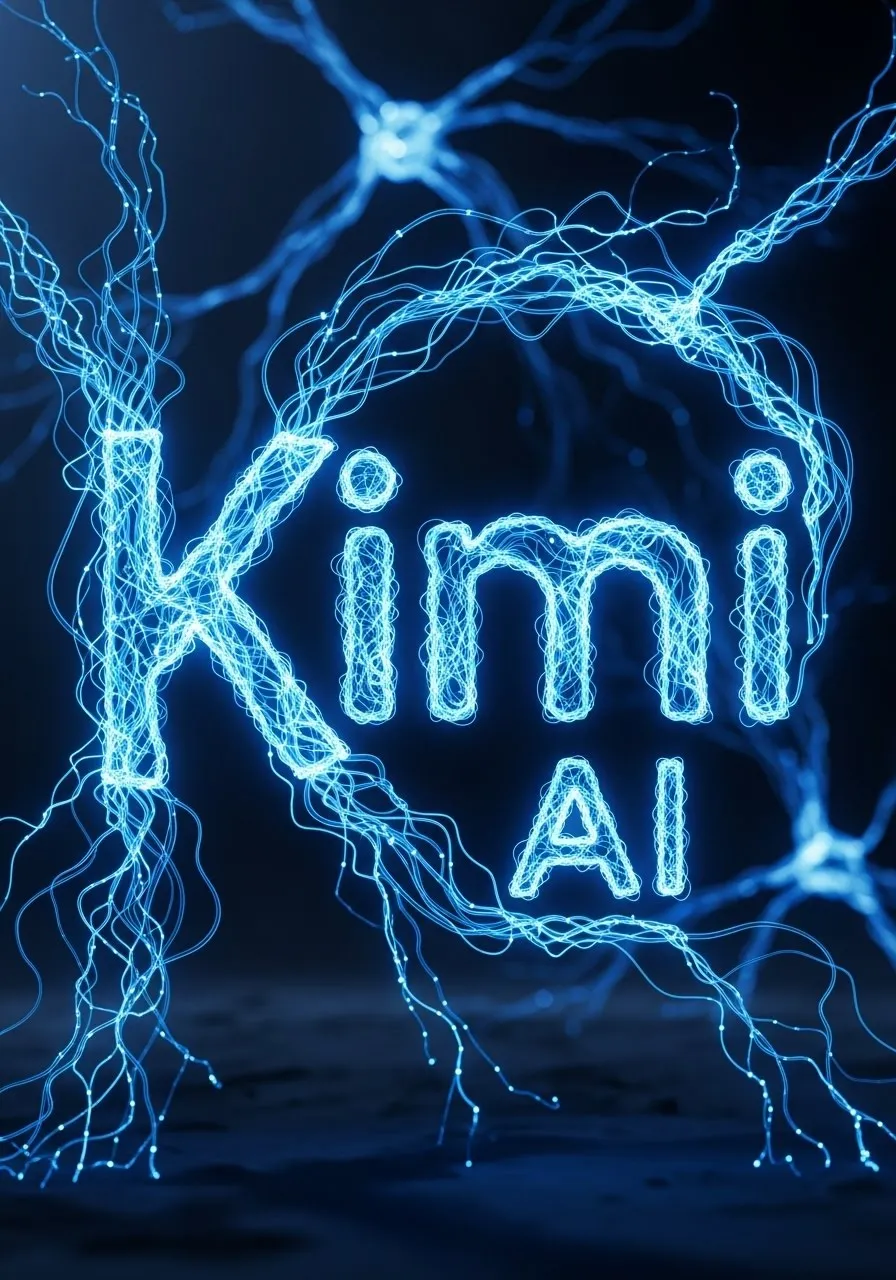"Is this... really free?" I still remember the shock of my first encounter with the 'monster rookie' that suddenly appeared in the AI chatbot market, a space once dominated by GPT-4 and Claude 3.5. It arrived boasting an astounding 2 million character context window, as if to mock Claude's already impressive 200,000-character capacity. This is the story of Kimi AI, developed by the Chinese AI startup 'Moonshot AI'. Not only does it read long texts, but its latest open-source model, Kimi K2, is shaking up the global developer community by showing performance that surpasses GPT-4 in benchmarks. Can Kimi become the new game-changer in the AI market? In this article, we'll dive deep into everything Kimi AI. 🚀
1. What is Kimi AI?: The AI from the Dark Side of the Moon 🌕
Kimi AI is a large language model (LLM) and AI chatbot developed by 'Moonshot AI,' a Chinese AI company founded in March 2023. The name 'Moonshot AI' was reportedly inspired by Pink Floyd's album 'The Dark Side of the Moon,' reflecting their ambition to boldly venture into uncharted territory. Founder Yang Zhilin cited 'long context' as the first milestone toward the grand goal of achieving AGI (Artificial General Intelligence), and Kimi is the result of that vision.
When Kimi was first unveiled in October 2023, it shocked the market with its ability to process a massive 200,000 Chinese characters (about 128,000 tokens). But Moonshot AI didn't stop there. In March 2024, they showcased their technical prowess by introducing a version that supports a staggering 2 million character context window. This is, by far, the highest in the existing AI model landscape, a colossal capacity that allows it to ingest and converse about several thick books at once.

Recently, Kimi has evolved beyond just reading long texts. With the release of powerful open-source models like 'Kimi K2' and 'Kimi K2 Thinking,' it now stands shoulder-to-shoulder with, and in some areas surpasses, GPT-4 and Claude in coding, math, and reasoning abilities. These models are particularly optimized for 'agentic' capabilities—autonomously calling multiple tools to solve complex tasks sequentially—hinting at the potential of an 'AI that works' rather than just a chatbot.
"We believe that the exponential expansion of the size of an LLM's context window will help unleash users' imagination for various AI applications." – Xu Xinran, Engineering VP at Moonshot AI
2. Kimi's Superpower: What Does a 2M-Character Context Mean? 📚
For an AI, the 'Context Window' is like its short-term memory. The larger this window, the more information the AI can remember at once, preventing it from losing the thread of a conversation. A 2 million character context might be hard to grasp, so let's look at some examples to feel its power.
- Analyzing Massive Documents: You can upload entire hundreds-of-pages-long legal contracts, financial reports, or academic papers and ask for summaries or specific information. No more splitting documents into smaller chunks.
- Understanding Entire Codebases: Developers can provide the source code of a whole project at once to discuss bug fixes or how to add new features. Kimi can understand the interdependencies between files to provide much more accurate answers.
- Ingesting a Whole Novel: You could feed it an entire Harry Potter book and ask it to track a specific character's journey or find instances of foreshadowing throughout the novel.
This capability goes beyond simple summarization. It plays a crucial role in discovering new insights and finding clues to solve complex problems within a vast sea of information. This is Kimi's most powerful weapon, setting it apart from other AIs.
Key Takeaway: Why Long Context Matters
A long context gives an AI a broader perspective. By understanding the big picture while still grasping the details, it can make far more profound and accurate inferences than when processing fragmented information. This is essential for AI to evolve from a simple information retrieval tool into a true 'thinking partner.'
3. Clash of the Titans: Kimi AI vs. GPT-4 vs. Claude 3.5 🥊
No matter how impressive Kimi's context-handling ability is, what ultimately matters is its real-world performance. Let's compare Kimi against the undisputed champion of the AI market, OpenAI's GPT-4, and the former frontrunner in long context, Anthropic's Claude 3.5, based on objective metrics and features.
| Feature | Kimi AI (K2 Model) | OpenAI GPT-4 | Anthropic Claude 3.5 Sonnet |
|---|---|---|---|
| Context Window | Up to 2M chars / 256k tokens 😲 (Varies by model; based on web chatbot) |
128k tokens | 200k tokens |
| Core Architecture | MoE (Mixture-of-Experts) 1T parameters (32B active) |
MoE (Presumed) | Transformer-based (Details not public) |
| Coding Perf. (SWE-Bench) | 65.8% (K2) / 71.3% (K2 Thinking) 🔥 SOTA among open-source models |
54.6% | 50.3% |
| Math/Reasoning (MATH-500) | 97.4% (K2 Model) | 92.4% | 94.8% |
| Open-Source Status | Major models (Kimi K2, Kimi-Dev) are open-source (Modified MIT License) | Proprietary | Proprietary |
| Pricing (Chatbot) | Essentially Free | $20/month (ChatGPT Plus) | Free tier / $20/month (Pro) |
| API Pricing | Very competitive (e.g., K2 at $0.15/M tokens) | Varies by model (Relatively high) | Varies by model (Relatively high) |
| Key Strengths |
|
|
|

4. Community Buzz: What Reddit and Forums are Saying About Kimi 🗣️
The true value of a new technology is often revealed not in benchmarks, but in the voices of its actual users. Communities like Reddit's r/LocalLLaMA and various tech forums are buzzing with debates about Kimi AI, especially its open-source K2 model.
- "The insane context size is a game-changer": The most common point of amazement is its long-context capability. One Redditor raved, "I fed it my entire code repository and asked for refactoring ideas, and it understood the relationships between files perfectly. This was an experience I could never get with Claude or GPT."
- "Impressive agentic abilities": Developers are particularly excited about the agentic features of the Kimi K2 Thinking model. One user commented, "I was blown away when it handled web searches, data analysis, and report visualization from a single prompt. It feels like I'm witnessing the beginning of an AI that can think and work on its own."
- "Still a bit unstable at times": Of course, it's not without its flaws. Some users have reported that "when the context gets extremely long, it sometimes forgets information in the middle or gives nonsensical answers (the 'lost in the middle' problem)." Others noted that "it has a tendency to be verbose and generate unnecessarily long answers for complex reasoning tasks."
- "Can't believe this is open-source": One of the most praised aspects is that all of this is available as open-source. Many developers are showing their support for Moonshot AI's move, saying, "A model with performance that used to cost companies millions of dollars can now be run on a personal server."
5. The Rise of Open-Source: How Kimi K2 is Disrupting the Developer Ecosystem 🌐
After proving its technical prowess with the Kimi chatbot, Moonshot AI made the bold move of releasing its core models—Kimi K2, Kimi K2 Thinking, and Kimi-Dev—as open-source. This is a starkly different strategy from OpenAI and Anthropic, who maintain proprietary models. The impact of this decision on the AI ecosystem is immense.
# Running the Kimi K2 Thinking model locally with Ollama
# 1. Install Ollama (ollama.com)
# 2. Run the following command in your terminal
ollama run kimi-k2-thinking
# Now you can chat with Kimi directly in your terminal!
# >>> Hello! Who are you?
# Hello! I am Kimi, an AI assistant developed by Moonshot AI...With just a few simple commands, anyone can now run a GPT-4-level AI on their own PC. This brings about the following changes:
- Democratization of Innovation: Startups and individual developers with limited capital can now build new applications using state-of-the-art AI technology. Companies concerned about data privacy can run AI models securely on their internal networks without relying on external APIs.
- The Era of Customized AI: Developers can fine-tune open-source models with domain-specific data (e.g., medical, legal, financial) to create highly specialized 'personal AIs.'
- Transparency and Trust: With the model's architecture and weights being public, researchers can better understand how it works, identify potential biases, and improve its weaknesses.
Of course, running the full 1-trillion-parameter Kimi K2 model on a regular PC is impossible. However, thanks to its Mixture-of-Experts (MoE) architecture, it only uses 32 billion active parameters during inference. Technologies like INT4 quantization make it possible to run on surprisingly reasonable hardware. Moonshot AI's open policy will act as a catalyst, further accelerating the pace of AI development.
6. The Verdict: Kimi AI's Pros, Cons, and Future 🎯
Kimi AI is undoubtedly a massive disruptor thrown into the AI market. It has dramatically pushed the limits of context length, which had been stagnant for a long time, and has shaken the ecosystem with the bold move of releasing a top-tier performance model as open-source. All things considered, here are Kimi AI's clear advantages and its current shortcomings.
👍 Pros
- Unmatched Context Window: The ability to process up to 2 million characters is a unique and unparalleled strength of Kimi.
- Powerful Performance: The latest Kimi K2 models show performance on par with or exceeding GPT-4 in various benchmarks like coding, math, and reasoning.
- Open-Source Ecosystem: By releasing core models as open-source, it offers developers high flexibility and potential for utilization.
- Free Access & Affordable API: The web chatbot is generally free to use, and the API costs are very competitive, lowering the barrier to entry.
👎 Cons
- Long-Context Stability: There are reports of information loss or performance degradation when the context length becomes extremely long.
- Language and Cultural Bias: Being developed in China, the model still performs best in Chinese and may miss subtle cultural nuances in other languages.
- Emotional Intelligence Limitations: Like other LLMs, it still has limitations in understanding complex human emotions or subtle non-verbal contexts.
- Tendency to 'Overthink': It can sometimes generate unnecessarily long and complex answers for simple tasks, which can reduce efficiency.
In conclusion, Kimi AI is an incredibly powerful tool, especially for researchers, legal experts, financial analysts who deal with vast amounts of documents, and developers who need to understand entire codebases. It will also become a new playground for developers who want to contribute to the open-source AI ecosystem. While it's too early to declare the end of the GPT-4 and Claude era, no one can deny that Kimi has emerged as a powerful competitor, creating a healthy 'three-kingdoms' dynamic. The range of choices has widened, and the evolution of AI will only accelerate. Who do you think your next AI partner will be? 😉
